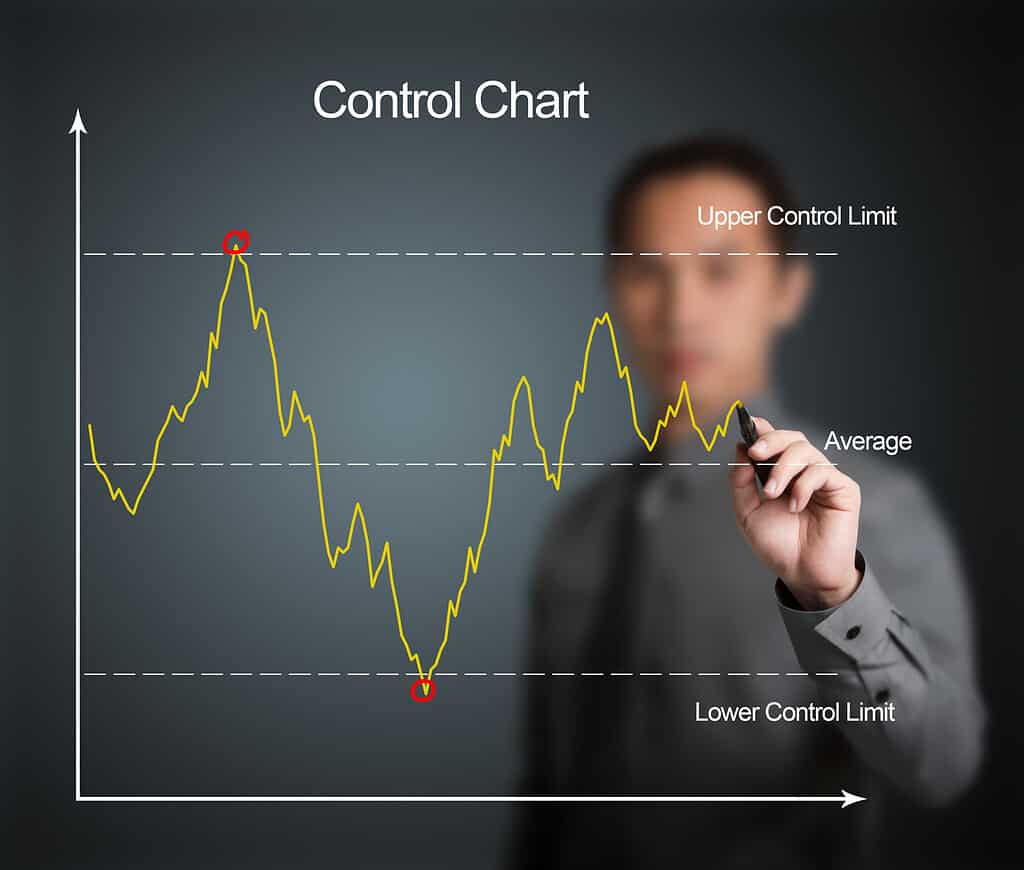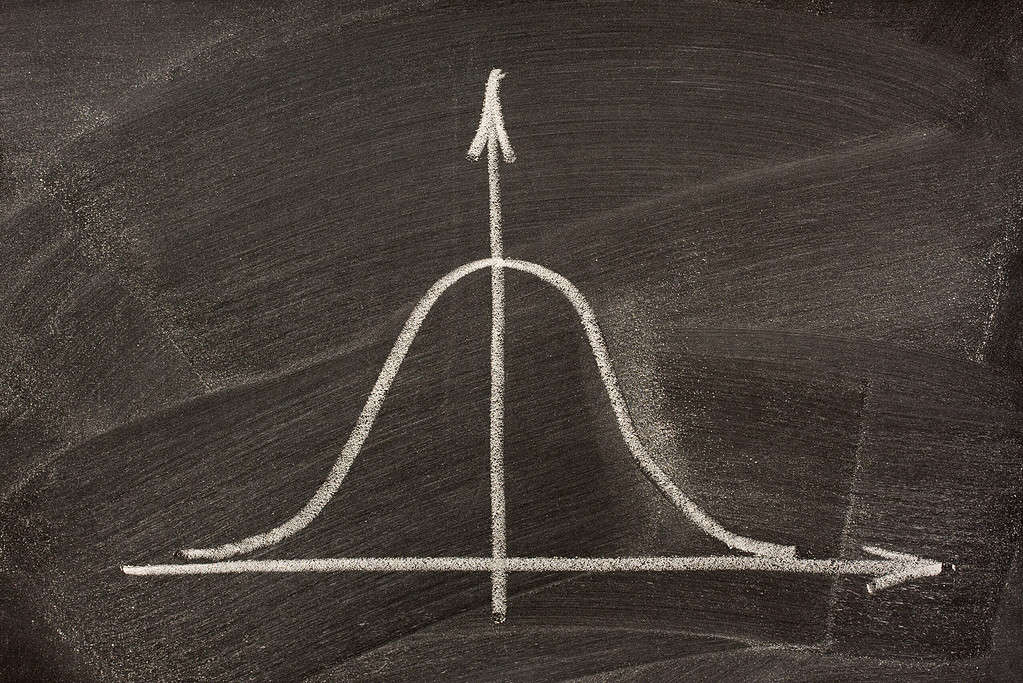Tag: data

The Complete Guide to Understanding Control Charts: How They Work, and Which to Use
Published:Control charts have two general uses in an improvement project. Undeniably, the most common application is as a tool to monitor process stability and control. A less common, although some might argue more powerful, use of control charts is as an analysis tool. Throughout this guide, you’ll have the various control charts identified. Accordingly, you’ll […]
Read more »
Standardized Residuals: Insights into Calculations, Interpretations, and Applications
Published:Residual, standardized residual, studentized residual — what do they mean, and how do I use them?
Read more »
Tukey’s (1-way ANOVA): See the Difference in Your Data Sets
Published:ANOVA will tell you whether there is a statistically significant difference in the population means of three or more groups of data. But which means are different? Tukey’s will tell you that. Analysis of Variance (ANOVA) is used to determine whether the population means of several sample data sets are statistically different or not. If […]
Read more »
Categorical vs. Continuous Data: What’s the Difference?
Published:Data analysis is a fundamental process in any project. However, data can be lumped into different types, with categorical and continuous data seeming almost opposed at first glance. That said, mastering these data types and understanding when and where to use them can lead to far more precision during data analysis as a whole. What […]
Read more »
Variable vs. Attribute Data: What’s the Difference?
Updated:Throughout any project, you’re going to gather up quite a bit of data. Now, this can be broken down into two categories: variable and attribute data. Understanding the difference and learning how it is applicable during the analysis stage can be crucial for future decision-making. So, with that in mind, let’s take a deeper dive […]
Read more »
Span: Catching Variation in Your Data
Published:Span is a descriptor of the spread or variation of your data. It is a simple calculation that eliminates the impact of any outliers or unusually high or low values in your data set.
Read more »
Variable Data: Seeing the Change in Your Data
Published:Data is just data, right? Hardly! We hear about discrete data, attribute data, continuous data, and variable data. Let’s unravel some of the confusion.
Read more »
Analytical Modeling: Turning Complex Data into Simple Solutions
Published:Complex math is often the best way to make sense of a confusing maze of quantifiable variables and conditional relationships.
Read more »
Skewness in Data: What It Is and How to Interpret It
Published:When someone says your data is skewed, do you get upset? Skewness can be a natural state of your data. Let’s find out more about skewness and what it means.
Read more »
Continuous vs. Attribute Data: What’s the Difference?
Published:What is Continuous? Continuous data refers to numerical data with any value within a certain range. The values have infinite possibilities, but they all fall within a range. These can be whole numbers or decimals measured using data analysis like skews and line graphs. This kind of data can change over time and […]
Read more »
Discrete vs. Continuous Data: What’s the Difference?
Published:When it comes to Six Sigma, data is your lifeblood. The ability to interpret what the data is saying is how you know whether you are on the right path. Further, it shows how you’re achieving your goals and objectives and avoiding roadblocks on your journey toward success. Accurately collected and analyzed data […]
Read more »
Tips for Interpreting Discrete Data: Understanding Category Variables
Published:Understanding discrete data will give you yet another tool for understanding your process measure or outcome. This article will explain the tips and traps of using discrete data in process improvement.
Read more »
Attribute Data: Quantifying the Qualitative
Published:You will often see attribute data and discrete data being used interchangeably. At some level, they are similar. But, if we dive a little deeper, you’ll see that there’s a bit more distinction than meets the eye.
Read more »
Big Data vs. Small Data: Which Is Right for Your Business?
Published:Big Data vs. Small Data Big data vs. small data, which should you be paying attention to? Data is generated throughout an organization. You’re gathering it when selling products, producing things, and even just interacting with customers. However, when we start talking about data, the notion of big data and small data enter […]
Read more »
The Rise of Data-Driven Decision-Making: Why It’s Crucial for Success
Published:What is data-driven decision-making? Chances are you’re used to seeing data-driven being bandied about, considering this you’re on our site. However, that isn’t the full approach we’re discussing today. Six Sigma is a methodology driven by data, but it isn’t the whole picture for this new set of tools coming about in the […]
Read more »
A Guide to Using the Wilcoxon Rank Sum Test: Testing for Non-Normality
Published:The Wilcoxon Rank Sum Test, sometimes called the Mann Whitney Wilcoxon Test or Mann Whitney U test, is used to test whether two independent samples come from the same population or two different populations.
Read more »
Rounding and Round-off Rules: How It Fits Into Your Data Analysis
Published:When performing statistical data analyses, quality professionals are always challenged to maintain data integrity. When should you round up the answer; when should you round down? How many significant figures are appropriate for the data set that has been taken? Below is a set of simple rules that should help you traverse the […]
Read more »
The Importance of Implementing Effective Metrics
Published:When a company promises and delivers on quality, there is a good chance that customer satisfaction and retention will be high. But paving the road to success depends on companies being well-informed about their own business. They achieve that knowledge by developing and utilizing effective metrics. Why Do We Need Them? Metrics are […]
Read more »
Why Upper Specification Limits Matter in Process Improvement
Updated:The upper specification limit represents the highest limit that a measurement or reading can reach and still be acceptable to the customer. There are several benefits of monitoring USL and determining if a process can satisfy customer requirements.
Read more »
Dealing with Non-normal Data: Strategies and Tools
Updated:What is non-normal data? Normally distributed data is a commonly misunderstood concept in Six Sigma. Some people believe all data collected and used for analysis must be distributed normally. But normal distribution does not happen as often as people think, and it is not a main objective. Normal distribution is a means to an end, […]
Read more »
TaaG Analysis – Fast and Easy for Comparing Trends in Large Data Sets
Published:TaaG (trends at a glance) analysis is a fast way to compare trends of subsets of data across large data sets. It is an ideal tool to use in the Measure and Control phases of DMAIC (Define, Measure, Analyze, Improve, Control) projects. The value of TaaG analysis is best understood by way of example. Suppose […]
Read more »
Resource Page: A Primer on Non-normal Data
Published:The distribution of data can be categorized in two ways: normal and non-normal. If data is normally distributed, it can be expected to follow a certain pattern in which the data tend to be around a central value with no bias left or right (Figure 1). Non-normal data, on the other hand, does not tend […]
Read more »
Measurement System Redesign and Innovative Data Management
Published:A multinational paper company wanted to reduce its cost of poor quality. The company recognized an opportunity to use Six Sigma concepts to minimize variability in its processes.
Read more »
Real-time Feedback Changes the Game
Published:Efficiency is in everyone’s interest. However, achieving it is heavily dependent on the quality and timeliness of crucial performance data. Live, real-time information is crucial for any manufacturing business. Waste benefits nobody, whether it is a waste of materials, time or energy. … One of the things that I have learned in manufacturing is that the […]
Read more »